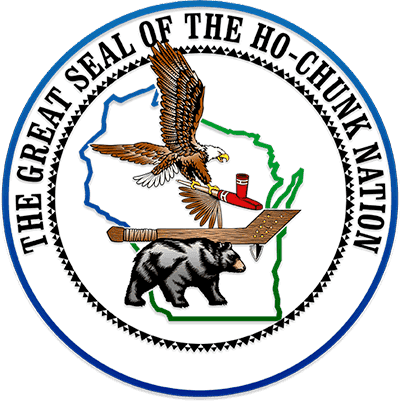'It's like having grandma or grandpa in their pockets': Elders working to preserve Ho-Chunk language

It used to be that a Ho-Chunk youth would have to wait until they were in the presence of an elder if they had a question about how to say something in their ancient language.
Today, the youngster can simply look up the words on their phone, using the new Ho-Chunk Dictionary app.
“They don’t have to wait around for an elder speaker,” said Wilhem Meya, chair of The Language Conservancy. “They say it’s like having Grandma or Grandpa in their pockets.”
The Language Conservancy is a nonprofit organization founded in 2005 by Indigenous educators that works to preserve and revitalize Indigenous languages across the U.S. and around the world.
“Of the over 700 languages spoken in the world, it's estimated that 90% of them will become extinct over the next 50 years,” Meya said.
The Ho-Chunk are indigenous to Wisconsin and their traditional speak is a Siouan language, which is similar to Ioway, Otoe and Missouria languages.
There are more than 7,750 Ho-Chunk tribal members worldwide, but only about 700 members speak the Ho-Chunk language as a second language.
Fewer than 50 first-language speakers of Ho-Chunk are alive — most of them are in their 70s or older.
“We’re really in a race against time to teach young people while we still have first-language speakers,” Meya said.
He said elders are eager to share the language with their grandchildren in ways they weren’t able to in the past. Speaking Ho-Chunk was once forbidden by Western educators, especially in boarding schools.
In 2019, TLC helped create the Ho-Chunk Dictionary app, available online with more than 12,000 words translated.
“Young people by the thousands are now using it to look up words,” Meya said.
He said the online dictionary is a bridge between generations and gives young people confidence in speaking the language of their ancestors.
In July, TLC workers visited the Ho-Chunk Nation Community Center in Black River Falls for a few days to record words and sentences from speakers in the Ho-Chunk language.
Meya said the recordings are important because there are certain sounds in Ho-Chunk that aren't common in English.
He said the syntax can be drastically different, too. For example, in Ho-Chunk, the verbs aren't often separated from the pronouns or prefixes. So, the phrase “I see you” might be conveyed in a word in Ho-Chunk.
Meya also said that, while there are four verbs to describe “coming” or “going,” there might be 20 or more expressions in Ho-Chunk that could mean “coming back from somewhere” or “carrying something.”
“It’s a very beautiful and expressive language,” he said.
About 600 recordings were made to show the nuances of the language by TLC, which will be used to further educate.
“For me, the language is at the heart of our culture and our people,” Ho-Chunk linguist Henning Garvin said. “The very name of our people refers to our language, People of the Sacred Voice, and stems from our creation story, when Hoocąk (Ho-Chunk language) was first given to us.
“Languages encapsulate much of the culture they come from, and exist as one of the roots of identity and to maintain our sovereignty. So, to maintain our identity and to maintain our sovereignty, I think it is vital and necessary that we maintain our language.”
Meya said the TLC is hoping to work with more tribal nations in Wisconsin — including Menominee, Potawatomi and Ojibwe — to help revitalize their languages.
Frank Vaisvilas is a former Report for America corps member who covers Native American issues in Wisconsin based at the Milwaukee Journal Sentinel. Contact him at fvaisvilas@gannett.com or 815-260-2262. Follow him on Twitter at @vaisvilas_frank.
This article originally appeared on Green Bay Press-Gazette: The Language Conservancy working to preserve Ho-Chunk language
